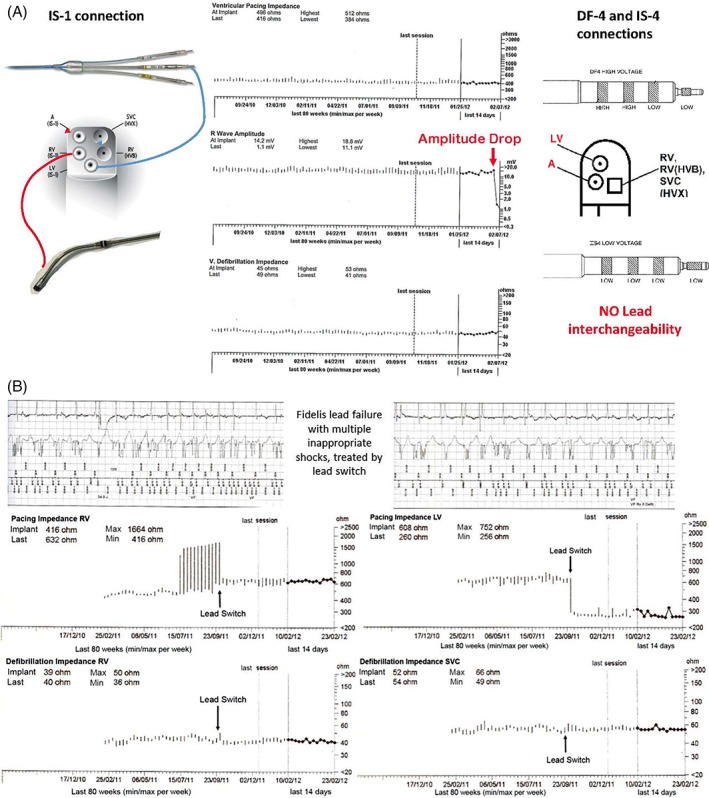Figure 2.

A, Prophylactic LV and fidelis RV lead switch in a CRTD (left side) due to drop of signal amplitude (central panel). Loss of lead interchangeability with DF‐4 and quadripolar LV lead connections would prevent such action (right side). B, Lead switch to treat failure of an RV lead under advisory notice in a CRTD patient. From top to bottom: Inappropriate shocks due to ring electrode fracture; trends of RV and LV lead impedance before and after lead switch, and of shocking coils impedance. Note the return to normal RV impedance after the LV lead was connected (the LV maintains a similar impedance regardless of the port whom it is connected to), and the drop of LV impedance once the RV lead was connected in tip to coil configuration (from out of range to the typical extend‐bipolar impedance). Shock impedance is up to now unchanged after 6 more years
